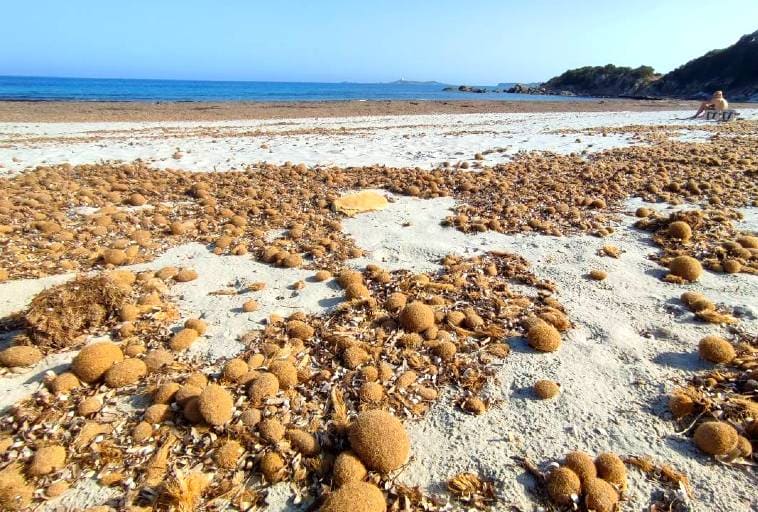Balearic Islands: Removing the accumulations from Posidonia on the beaches is negative for the environmenta team with the participation of researchers of the Mediterranean Institute for Advanced Studies (UIB-CSIC) Discovered that The accumulations of Posidonia OceanicaThe most important marine plant in the Mediterranean Sea, on the beaches do dozens of invertebrates, such as insects and small crustaceans, among other things.
The work, aimed at three sandy beaches in Mallorca for a year and Posted in the magazine Food jobsIt is part of a study that is aimed The newspaper deepens that these deposits of seaweed are so common for swimmers and thus improve their management and conservation.
By loosening the plant, leaves and other plant filaments of Posidonia They reach the banks of the beaches because of the action of wind and sea bromes, which forms large accumulations of organic matter.
For scientists, these deposits, arrangements mentioned, They are the key that they are being considered EcotonosThat is, transition eco -systems between different habitats where there are important exchanges of matter and energy and where different ecological processes interact into communities of their own species.
“Because of the chemical composition of the sheets of PosidoniaThose high levels of lignin and cellulose and low levels of nutrients contain, these accumulations can take weeks, months or even years to dissolve, achieve great deposits, condition the morphology of the beaches and change the landscape, ”explains one of the study authors,” ” FragtranIt works at Imedea (UIB-CSIC).
The work indicates that, at least, About twenty animal species of up to four different trophic groups live in the sandy beaches of the island of Mallorca.
“The arrivals perform important functions in coastal ecosystems. Among them, They retain the sand of the beaches and serve as a source of nutrients for the vegetation of the dunar systems.
Although they are not unknown to swimmers or by the inhabitants of the Mediterranean coastal genes, their ecological It has not been studied much and for years the fauna that lives in it has gone unnoticed, “he says Belltran.
They are not an annoying waste, they are a hiding place
“On the one hand we wanted to determine the diversity of the fauna that lives in the arrivals and that goes to them to resort or to seek refuge and on the other hand understand how seasonal and spatial changes condition the structure of these communities,” says the CSIC researcher.
According to scientists, the number of animal species is probably much larger than 20. This fauna, composed of both marine and terrestrial species, is formed by insects, colmoli, anélidos, isopods and mites, among other things.
Perhaps the most famous inhabitants are the Beach fleas ((Talitrus Saltator), usual shellfish in the intermediate parties of the Mediterranean coasts. “These are not, much less, the most common,” he says Belltran.
Apart from the diversity of macrofauna that lives in these deposits Posidonia, Researchers have also found important differences in the structure of communities between Stations of the Year.
‘For example, we discover that the Colmols are the most common inhabitants in these arrivals and contribute to more than 75% to the structure of the communities, especially in the warm months. In an earlier study we had already noticed that the dynamics of the deposits of Posidonia It was very variable between beaches and stations and we asked if seasonal’s boundness could condition the type of species that we could find at a certain moment of the year or that beaches with different morphological characteristics could house the same species or not”, Points to the scientist.
According to the authors of this work, Artificial elimination of these arrivals has a direct influence on the biodiversity of coastal ecosystems. “We believe that understanding how these ecosystems work will help us to better plan the management of our coast and to be able to develop more precise actions and with the minimum possible ecosystem impact,” he concludes Belltran.

